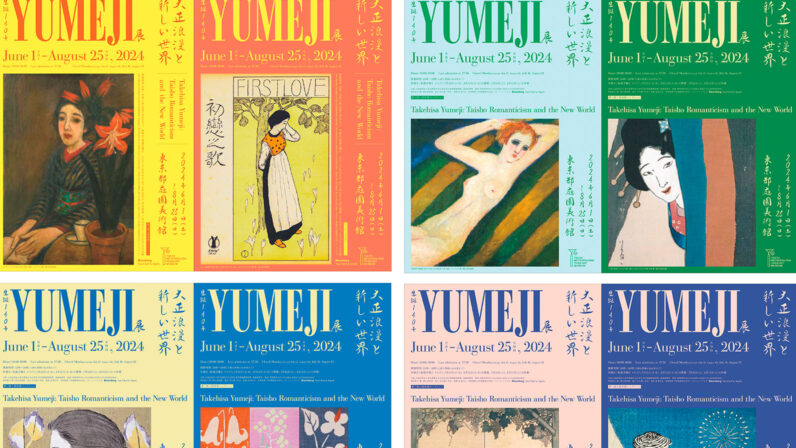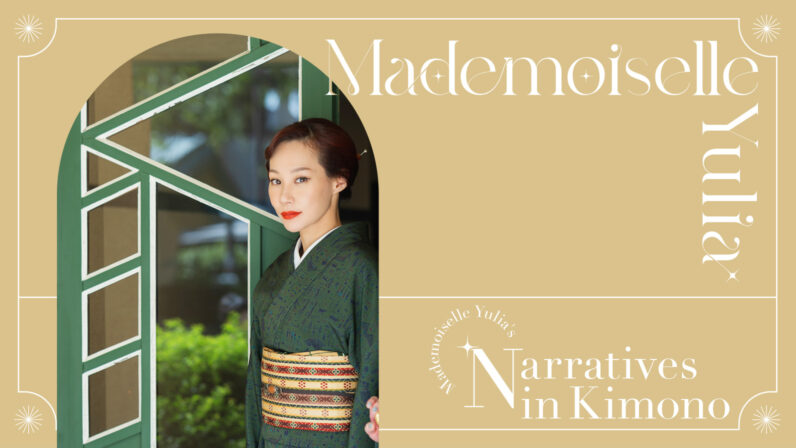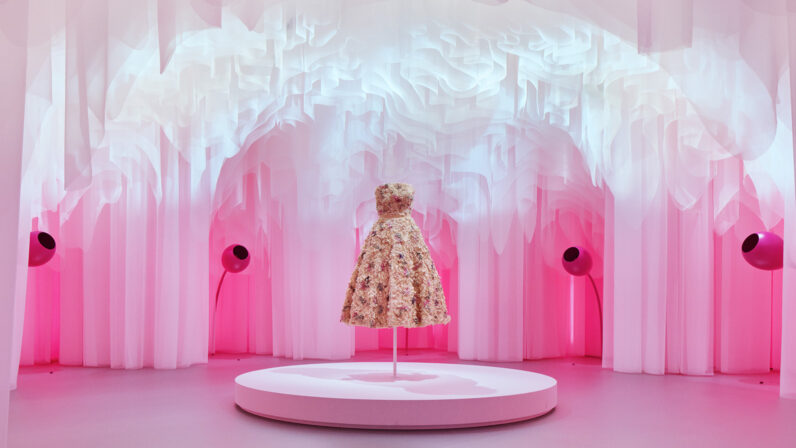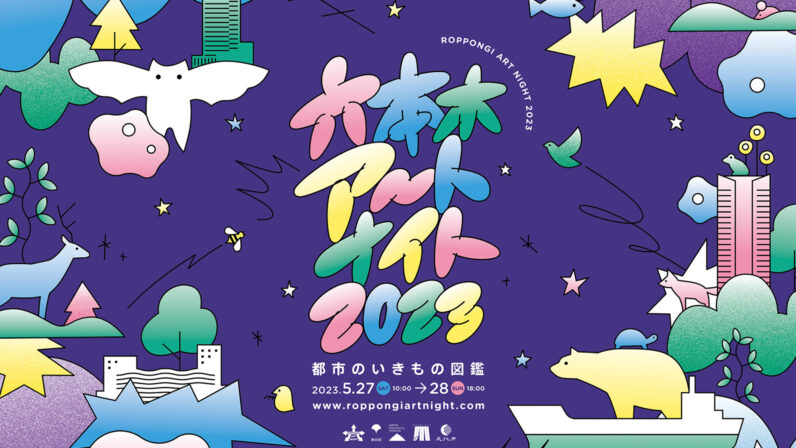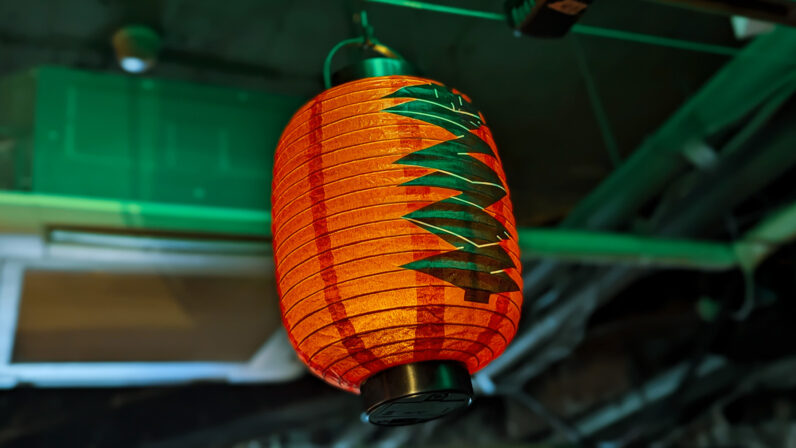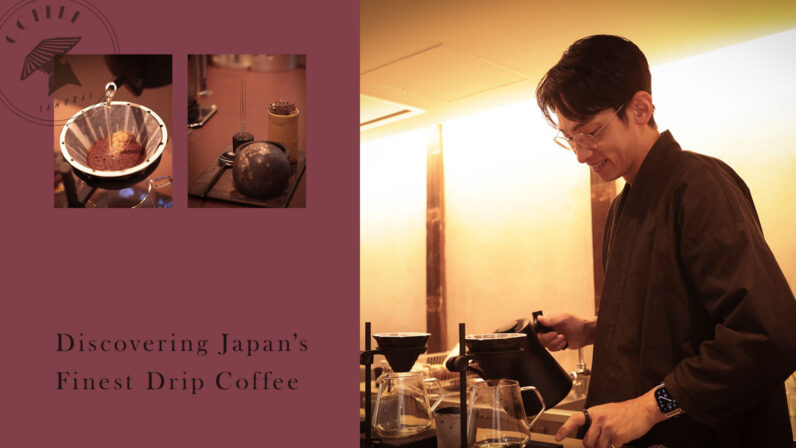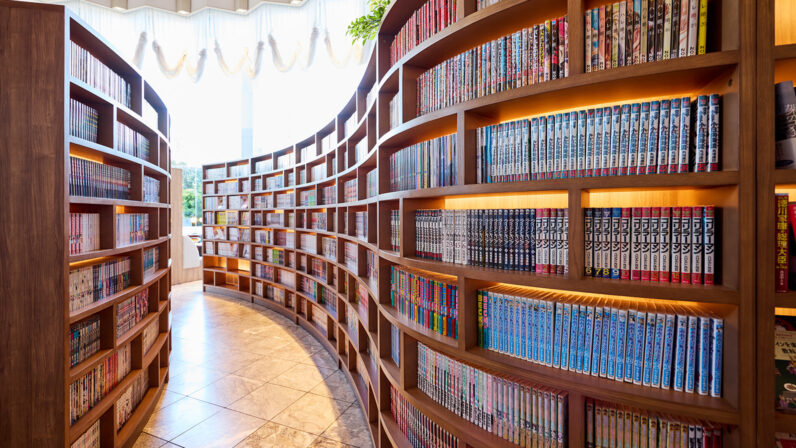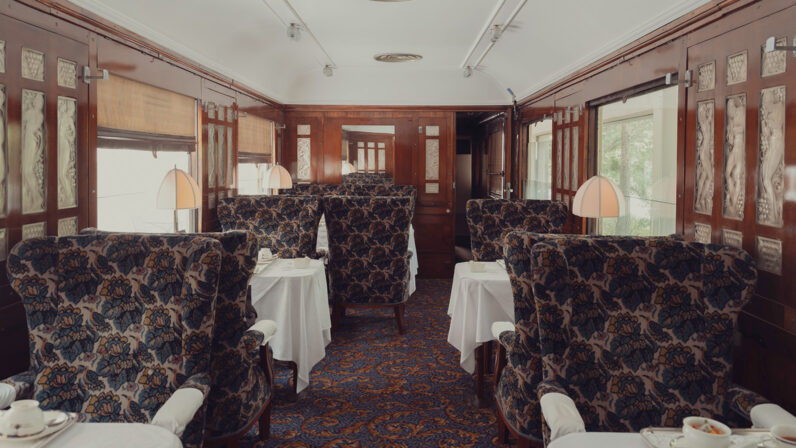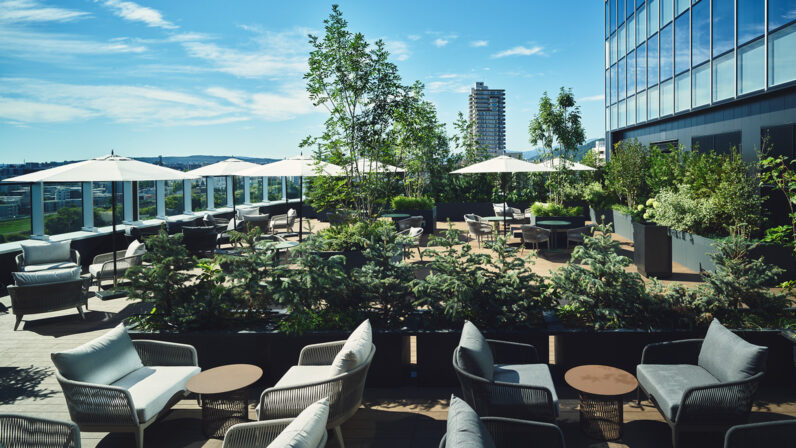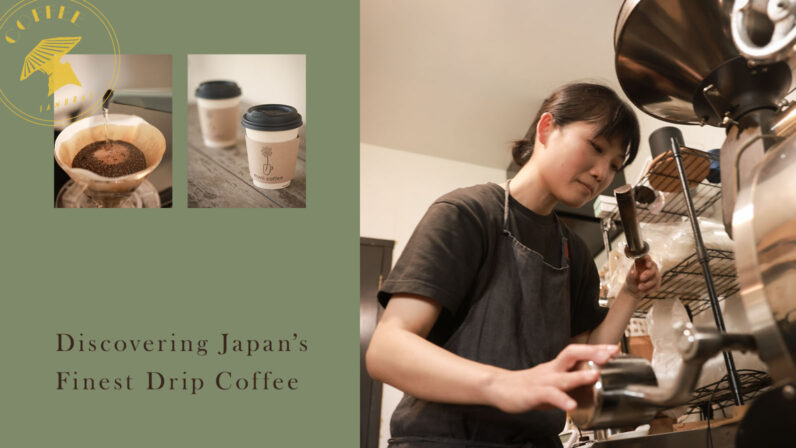Everybody knows that Japan’s capital city is a diverse and cosmopolitan place, but Tokyo is also fast gaining recognition as a city of art. ‘Art Week Tokyo’ began in the fall of 2021, and to commemorate the start of this year’s event, we hopped on a bus tour to visit the many art galleries nestled throughout the vast metropolis.
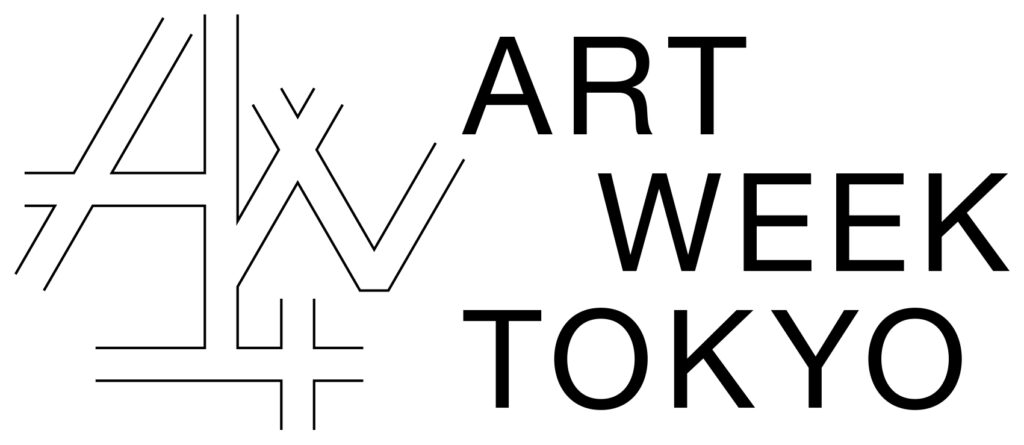
Tokyo, the fast-growing art hub
After a hot and humid summer, the light autumnal breeze and calm blue skies that gently sweep through Japan create the perfect conditions for a spot of sightseeing in the grand city of Tokyo.
The city is famous for its many epic landmarks, trendy boutiques and stylish restaurants, but did you know that in recent years Japan’s capital has also been attracting art aficionados from all corners of the globe? Now, Tokyo’s art appeal is growing even bigger with the founding of the annual ‘Art Week Tokyo’ event in the fall of 2021.
Art Week Tokyo is a contemporary art event that aims to form links between Japan and the rest of the world through art. Its popularity is already substantial – the first event, held in 2021, managed to attract over 20,000 visitors over a four-day period, despite being held amid a global pandemic.
Tokyo’s art scene is certainly unique – the city contains many amazing galleries and museums, but they are spread widely throughout the huge metropolis. One of the joys of Art Week Tokyo is the free buses that connect the various galleries and museums, providing the perfect window to all the incredible Tokyo sights along the way.
Despite only being in its second year, Art Week Tokyo has already become an international sensation, in part due to its affiliation with Art Basel. Tokyo’s leading art museums are all represented: from the National Museum of Modern Art, Tokyo, to Mori Art Museum, Tokyo Metropolitan Museum of Photography, Artizon Museum, Watarium Museum and Tokyo Opera City Art Gallery. Starting this year, the National Art Center, Tokyo, Museum of Contemporary Art Tokyo, Tokyo Metropolitan Teien Art Museum, Shiseido Gallery, Ginza Maison Hermès Forum, and more will also take part.
There are galleries with diverse range of spaces, from contemporary art scene leaders, BTAP Tokyo Gallery and Ota Fine Arts, to the up-and-coming MUJIN-TO Production and Take Ninagawa. Then there are the exclusive participants such as Kaikai Kiki Gallery, led by contemporary artist Takashi Murakami. The overall line-up is rich in such unique variety that only a world-leading city like Tokyo could offer.
Countless museums and galleries spread over a wide area
Due to Tokyo’s abundance of museums and galleries spread over a large region, official Art Week Tokyo shuttle buses have been set up for eventgoers. Buses run every fifteen minutes from 10am to 6pm, along six different routes. Route information, bus information and gallery information can be found on the official Art Week Tokyo free app.
Zero Mile chose to ride on bus route C from the list of six bus routes labelled A to F.
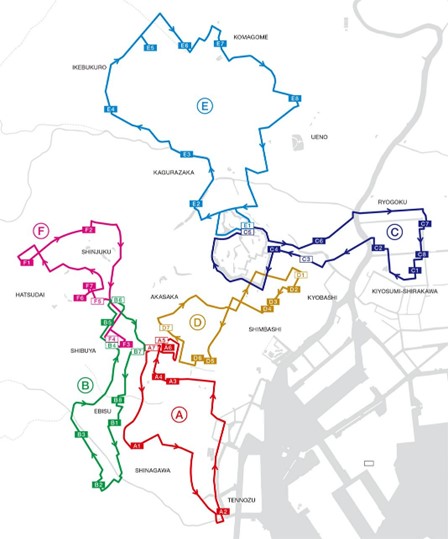
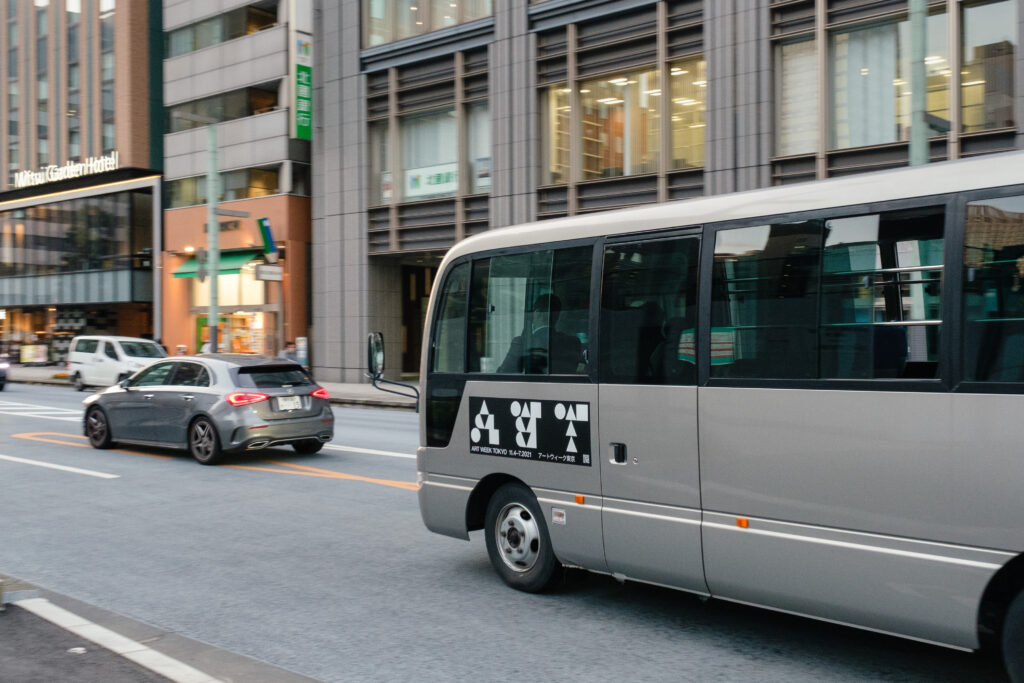
The reason we chose bus route C is because the starting point, the Museum of Contemporary Art Tokyo, is close to Chuo and Minato wards, where all the best hotels in Tokyo are located. Most of the hotels here are within walking distance of key areas, and cab rides to other nearby landmarks usually take less than fifteen minutes. Another reason we chose bus route C is because we wanted to check out the East Gardens of the Imperial Palace, which sits directly opposite the Museum of Contemporary Art Tokyo.
The East Gardens of the Imperial Palace were once the residence of the Tokugawa family – the shogunate who ruled over Japan for fifteen generations. Today, it is still an important part of the Imperial Palace (where Japan’s Emperor still resides), and is open to the public as a garden inside the wider Imperial Palace grounds.
Edo Castle was built in 1457 by a warlord named Ota Dokan, but in 1590, it became the castle of Tokugawa Ieyasu, a powerful warlord at the time. Over the years, the castle was expanded by the Tokugawa family, who became shogunate rulers that unified Japan, and for the next 260 years the castle remained the center of Japanese politics. It was also, of course, the largest castle in Japan, with a total circumference of 16 km. It was not until 1869 that it became the Imperial Palace as we know it today.
Easy access from Otemachi Subway Station
The East Gardens of the Imperial Palace can be accessed through the Ote-mon Gate, which used to be the main gate of Edo Castle. The entrance can be found close to Otemachi Subway Station in Otemachi, one of Tokyo’s most prestigious business districts, or a few minutes’ walk from Tokyo Station.
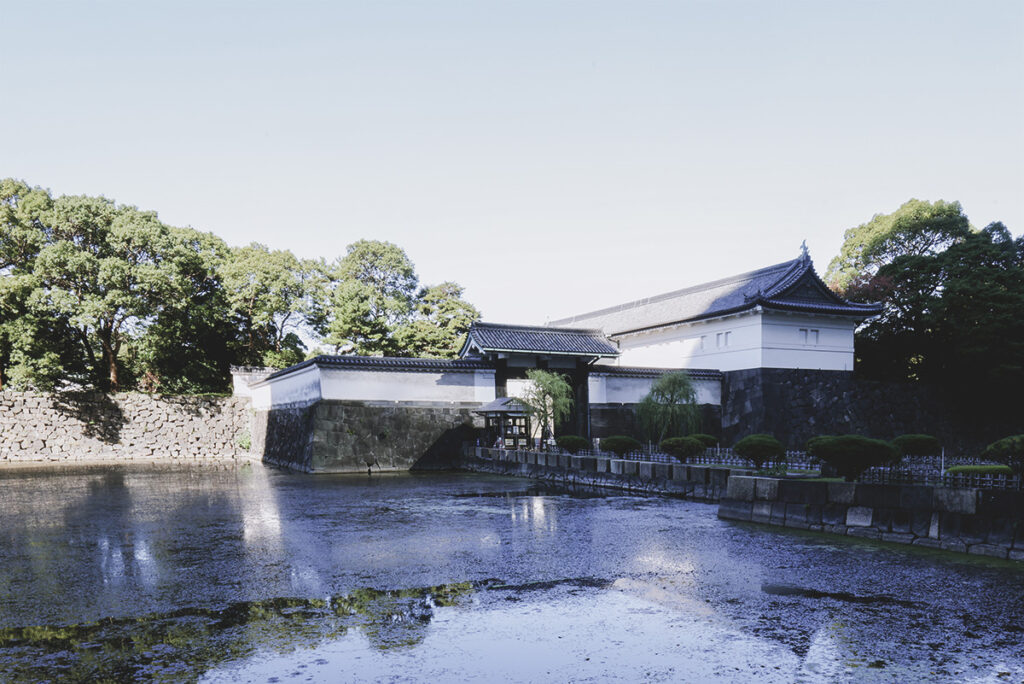
Ote-mon Gate (Korai Gate)

Watari-yagura Gate
The Watari-yagura gate was built inside the Ote-mon Gate for both storage and defense – intruders could be shot from inside the watchtower above the gate
Inside the garden, the wide-open skies are in stark contrast to the skyscrapers of Tokyo. Since this space has been turned into a garden, almost no buildings from the Tokugawa period remain, and wherever we looked there was only pristinely maintained greenery. The only building still standing is the Fujimi-yagura – a turret used to observe the surrounding area during the war and warn the guards of incoming intruders.
However, there is one other relic that remains partly intact – the stone walls of the castle. Interestingly, the shape of the stones and the way they are stacked differ depending on the construction period. Round, jagged stones were used for building in ancient times, while bricks of the newer periods are straighter and arranged together uniformly with no gaps. It was fascinating to be able to see the difference in masonry techniques over the years laid out before our very eyes.
The main stars of the show in the East Gardens are no doubt the Japanese-style gardens, such as the Ninomaru Garden, wooded areas, and bamboo groves. The Ninomaru Garden is an authentic reproduction of the garden created in 1630 at Nijo Castle in Kyoto by famous tea master Kobori Enshu.
Moving deeper into the palace grounds, we could see the iconic castle tower and the great lawn stretching out before it. It was on this great lawn where the shogun’s inner palace was located – one of the most important areas in the whole of Edo Castle. This lawn was also the site of the recent ‘Daijosai’ enthronement ceremony for the current emperor of Japan.

Fujimi-yagura Guard Keep: This turret collapsed in the Great Kanto Earthquake, but was restored in 1925.
Photo by Imperial Household Agency

Photo by Imperial Household Agency
Still soaking in the vibe of the old Edo Castle, we passed through the Kita-hanebashi-mon Gate towards the National Museum of Modern Art, Tokyo, which is housed within the adjacent Kitanomaru National Garden. This national garden was once part of Edo Castle, and the Nippon Budokan is also situated within the same site.
インサート撮影(桜)HMAC-06-1024x683.jpg)
Viewed from the remains of the castle tower: the ruins of the inner palace, with the Honmaru great lawn in the background. The juxtaposition between the skyscrapers and the ancient ruins is particularly poignant.
Photo by Imperial Household Agency
A huge collection of modern and contemporary art
The National Museum of Modern Art, Tokyo opened in 1952. It was the first art museum in Japan to collect modern and contemporary art pieces and exhibit them permanently. The museum holds more than 13,000 works of art, including paintings, sculptures, watercolors, drawings, prints, and photographs.
During Art Week Tokyo 2022, this museum held an iconic Shinro Ohtake exhibition that made waves across the art world. Shinro Ohtake is a contemporary artist who debuted in the early 1980s and has created works in a variety of fields, including painting, sculpture, video, picture books, and installations. His works are characterized by their “density,” which is created by pasting and peeling off various objects – both two-dimensional and three-dimensional – in a collage-like process that builds up layers of volume and shape.
This exhibition was the first large-scale retrospective of Ohtake’s work since ‘Zen-kei 1955-2006’ at the Museum of Contemporary Art Tokyo in 2006. For the new 2022 exhibition, about 500 pieces were selected from Ohtake’s catalogue, from his early creations to his latest works constructed during the pandemic. The iconic collection of multi-media pieces was exhibited in a mysterious space surrounded by noise music.
After our morning visit to the East Gardens of the Imperial Palace and the National Museum of Modern Art, Tokyo, it was almost lunch time. Luckily, the National Museum of Modern Art, Tokyo is also home to a fantastic café restaurant, L’art et Mikuni. Produced by Chef Seizo Mikuni, this stylish establishment offers a fusion of French and Italian cuisine as a subsidiary of the popular authentic French restaurant ‘Hôtel de Mikuni’ (closed in December 2022). The food is rich and flavorsome, but not heavy, making it the perfect choice for a casual lunch. The large panoramic glass windows look out onto the lush greenery of the Imperial Palace, providing a relaxing view while you dine.

Exploring the ‘Shitamachi’ downtown area on bus route C
After lunch, it was time to get back on the bus to tour the rest of Route C. Route C connects central Tokyo to the ‘Shitamachi’ downtown areas on the east side of the city, which is where we headed for the afternoon. The first stop was Taguchi Fine Art, Tokyo in the Mitsukoshi-mae area of Nihonbashi, but due to time constraints we decided to skip it and headed straight to the next stop, MUJIN-TO Production in Kotobashi, Sumida-ku. This art location is not so big, but the black wooden structure makes a huge statement amongst all the traditional ‘shitamachi’ homes and small factories that line the area.
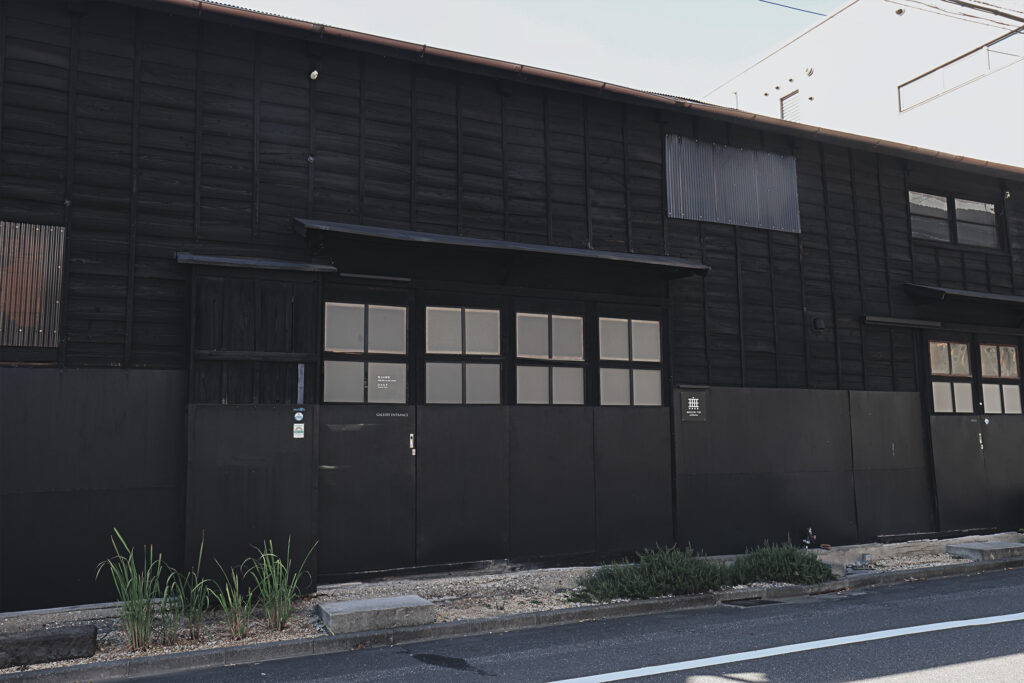


Pieces by Ryohei Usui: Even the ‘air bubbles’ in these bottles of water are made of glass in an intricate and calculated design process.
Creators represented here include contemporary art group Chim↑Pom, as well as artists Kazuhiko Hachiya, Ryota Yagi, Sachiko Kazama, Ryohei Usui, Yoko Asakai, Yukihiro Taguchi, Osamu Matsuda, Tsubasa Kato, Meiro Koizumi, and Yu Araki. During Art Week Tokyo, Ryohei Usui’s ‘Still Life on the Street’ solo exhibition was showcased at the gallery. Glass sculptures of plastic bottles and other plastic products were combined with aspects of cityscapes to create a unique worldview.
After leaving MUJIN-TO Production, the next stop was Kana Kawanishi Gallery in Kiyosumi-Shirakawa. Kiyosumi-Shirakawa has gained notoriety in recent years as an up-and-coming art district, however, due to Kotobashi’s many canals, it’s better to explore this area on foot. MUJIN-TO Production is located along the banks of the Oyoko River, which runs straight down to Kiyosumi-Shirakawa, so we simply followed the river down to reach our next destination.
Kiyosumi-Shirakawa has become a popular spot in recent years, thanks to its ample greenery and photogenic streets that feel worlds away from hustle and bustle of central Tokyo. It’s nice to slow down sometimes – and what better way to do this than a leisurely urban stroll. The distance between both galleries is about 1km – or about a 15-to-20-minute walk.
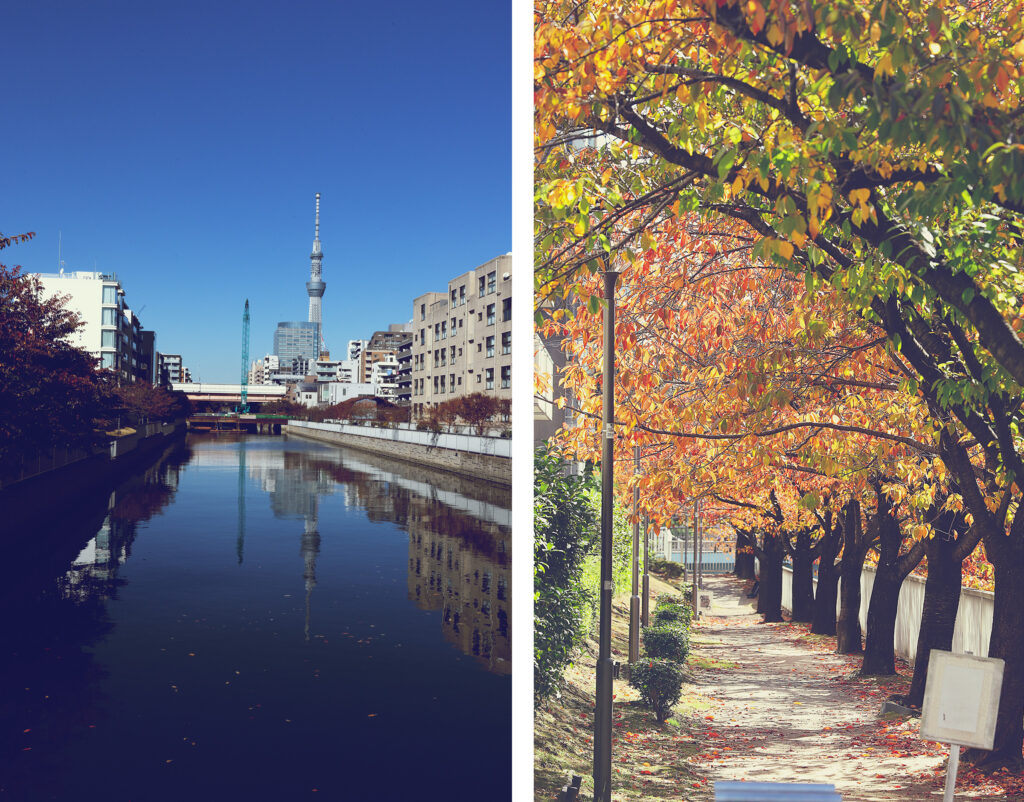
Conceptual works in a modern space
Kana Kawanishi Gallery is located on the first floor of a four-story building about 50 meters from the Onagi River. The building itself is a modern, concrete structure, and the walls inside are lined with conceptual works.
On this occasion, the exhibition featured a downloaded image of ‘Self-Portrait’ by Vincent van Gogh, drawn with a histogram on a canvas the same size as the original. The concept explored the question: just what is contemporary photography? The gallery featured a wide range of artists, from young and upcoming Japanese artists to overseas artists of international art festival fame.
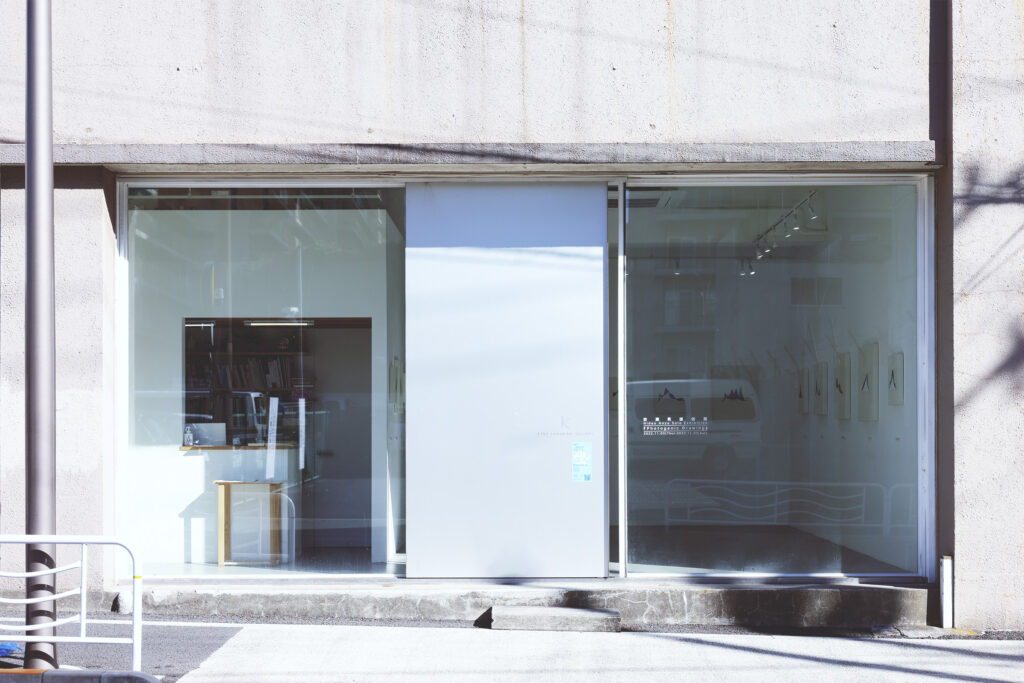
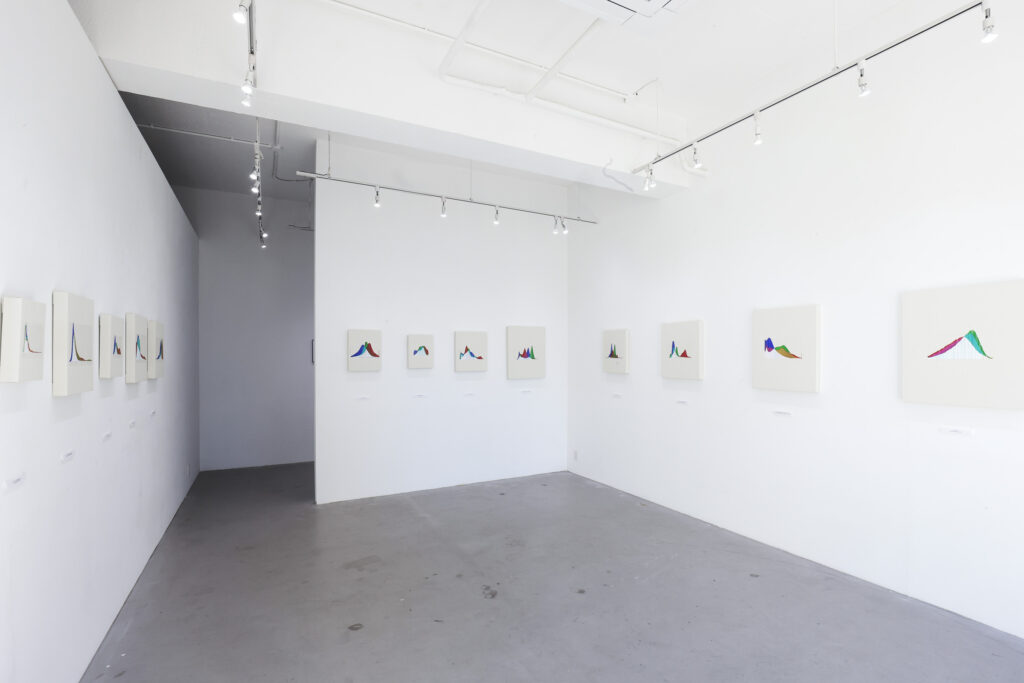
Kana Kawanishi Gallery
One of the other purposes of our stroll in Kiyosumi-Shirakawa was to enjoy the unique urban atmosphere. Kiyosumi-Shirakawa is not only an art district, but a gathering point for coffee-lovers.
The increase in the number of art galleries in Kiyosumi-Shirakawa was in part due to the fact that the area is a hub for water transportation warehouses. These warehouses, in addition to being convenient for water transportation companies, are blessed with high ceilings and no pillars, providing the perfect location for art galleries. As transportation systems shifted from water to land transportation, the number of vacant warehouses in the area increased, and many were converted into galleries.
These grand warehouses also mean it’s relatively easy to install smoke ducts for roasting machines, the ducts of which can be directed towards the canals. The area has attracted the attention of several authentic coffee roasters and cafes who have since set up shop there, creating quite the hipster buzz.
With so many chic cafes in Kiyosumi-Shirakawa, it can feel impossible to know where to get your coffee fix, but we decided on The Cream of the Crop Coffee, which opened in 2012. The cafe is housed in a warehouse along the Oyoko River, with a cool storefront typical of this part of town and a huge coffee roasting machine on display just inside.

A gallery with a huge glass facade
After taking a break at the cafe, our next stop was Satoko Oe Contemporary, also in Kiyosumi-Shirakawa. This contemporary art gallery was established in 2016, and can be immediately recognized from the street due to its gigantic glass windows. The gallery says it was designed with the aim of “creating a space that will remain in the memories of not only the people of the city, but also wider society”.
The exhibition on the day we visited was a two-person show by two young artists: Yuka Shiobara, who works to hide her individuality by repeatedly using characteristics of famous paintings in her own art, and Yuuka Ishii, who strives to make individuality visible by working in the completely opposite way. Satoko Oe Contemporary frequently collaborates with artists from Japan and abroad to hold fresh and exciting exhibitions.


Satoko Oe Contemporary
For our last gallery of the day, we headed over to the nearby Museum of Contemporary Art Tokyo, which was the original catalyst that transformed Kiyosumi-Shirakawa into an art district.
Opened in 1995, the Museum of Contemporary Art Tokyo is a public art museum located on the north side of Kiba Park. The museum has a collection of approximately 5,500 works of art, and frequently holds large-scale international exhibitions and other special events.
The exhibitions held here tend to cover a wide range of genres, from painting and sculpture to fashion, architecture, design, and animation. The museum also has an art library that contains approximately 270,000 books, and actively conducts workshops and lectures in order to spread art education.
A modern architectural wonder

https://www.mot-art-museum.jp/guide/museum-info

https://www.mot-art-museum.jp/aboutus
The Museum of Contemporary Art Tokyo is also a fascinating piece of architecture that is often used as a location for fashion shoots and events for luxury brands. It was at this museum that Michael Jordan held a celebration for the 30th anniversary of the ‘Air Force 1’ shoe in 2015 during a visit to Japan.
During Art Week Tokyo, the ‘MOT Collection’ was on display here, which aimed to “press the rewind button” to dive back into the museum’s past. We saw displays of artworks dating back to the 1960s, as well as those collected by the museum after 1975 when the new Tokyo Metropolitan Art Museum building was officially opened, and it began a major art collection drive. Works acquired by the museum from 1975 to the 1990s, such as those by Richard Long and Toshikatsu Endo were also available to see.
This is where Zero Mile ended our tour of Art Week Tokyo 2022. However, the bus route continues to galleries such as Hagiwara Projects and SMBC Private Wealth in Otemachi, which would be great to visit if you have extra time. Otherwise, it’s easy stay on the bus to go back to the city center.
Although we selected bus Route C for this year’s Art Week Tokyo, there also are five other routes to choose from, as mentioned earlier. Looking at the route map, these routes cover most of the major areas of Tokyo, from Roppongi, Omotesando, Shinjuku, and Ginza to Mejiro, Komagome, Nezu, and Sugamo. Tokyo’s vibrant art scene can’t be contained to a single area.
If you take your time and choose two or three routes over the course of a day, you will also be able to see a lot of Tokyo itself. Art Week Tokyo is scheduled to be held again this fall, so if you choose this time of year to visit Tokyo, why not enjoy a trip filled with contemporary art and urban strolls?



